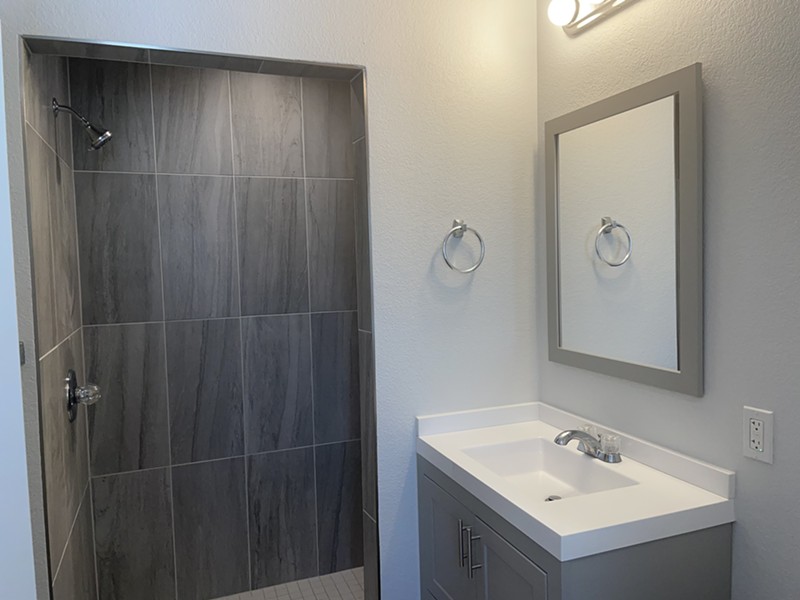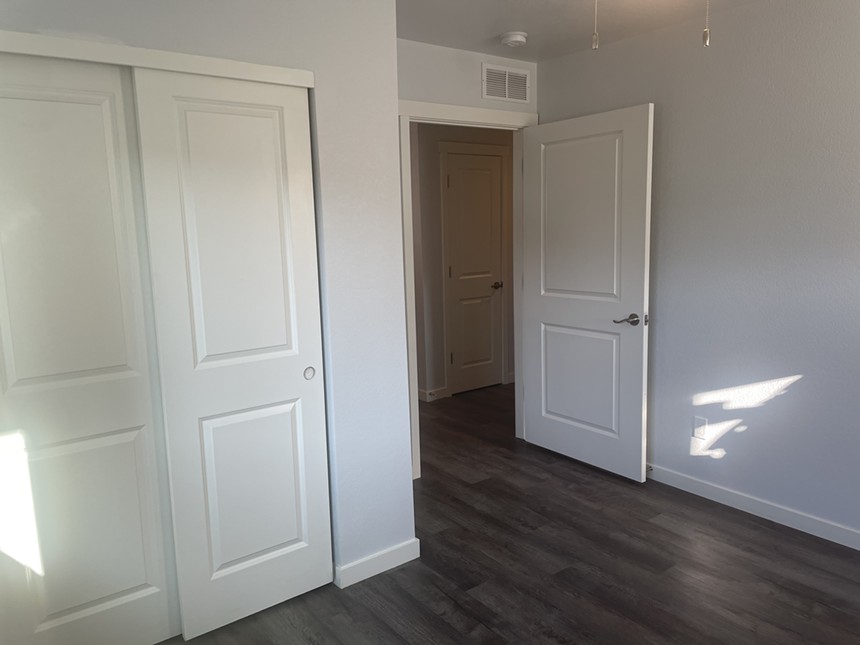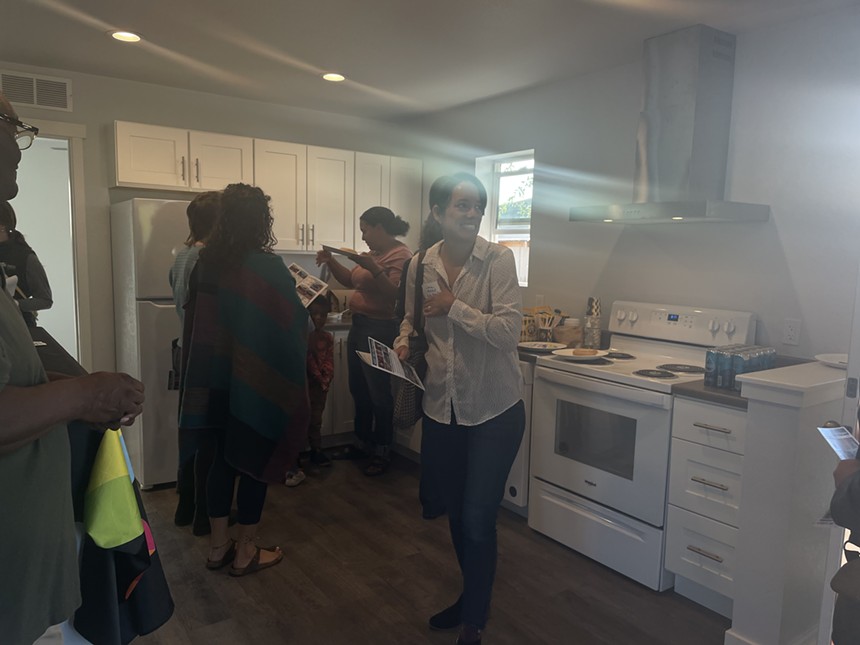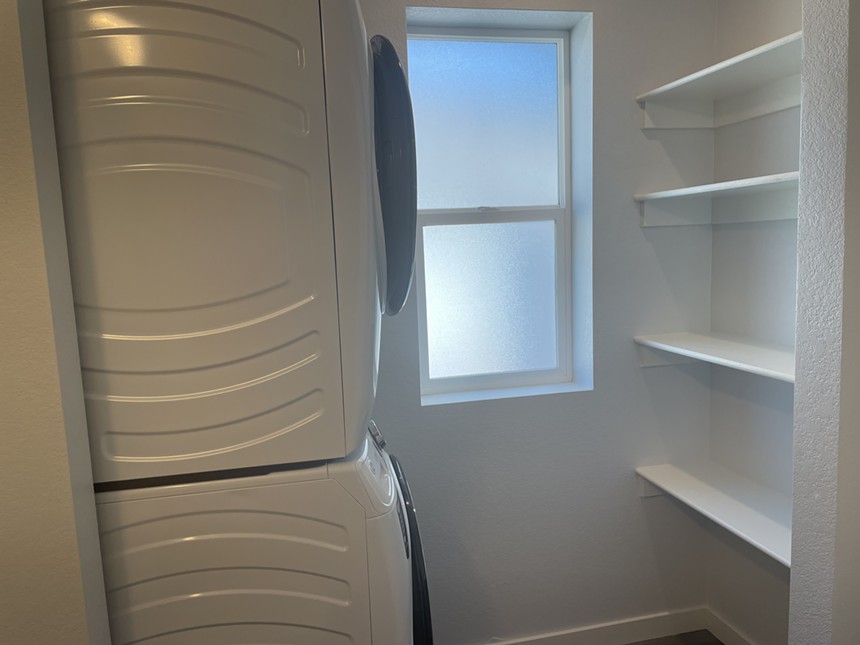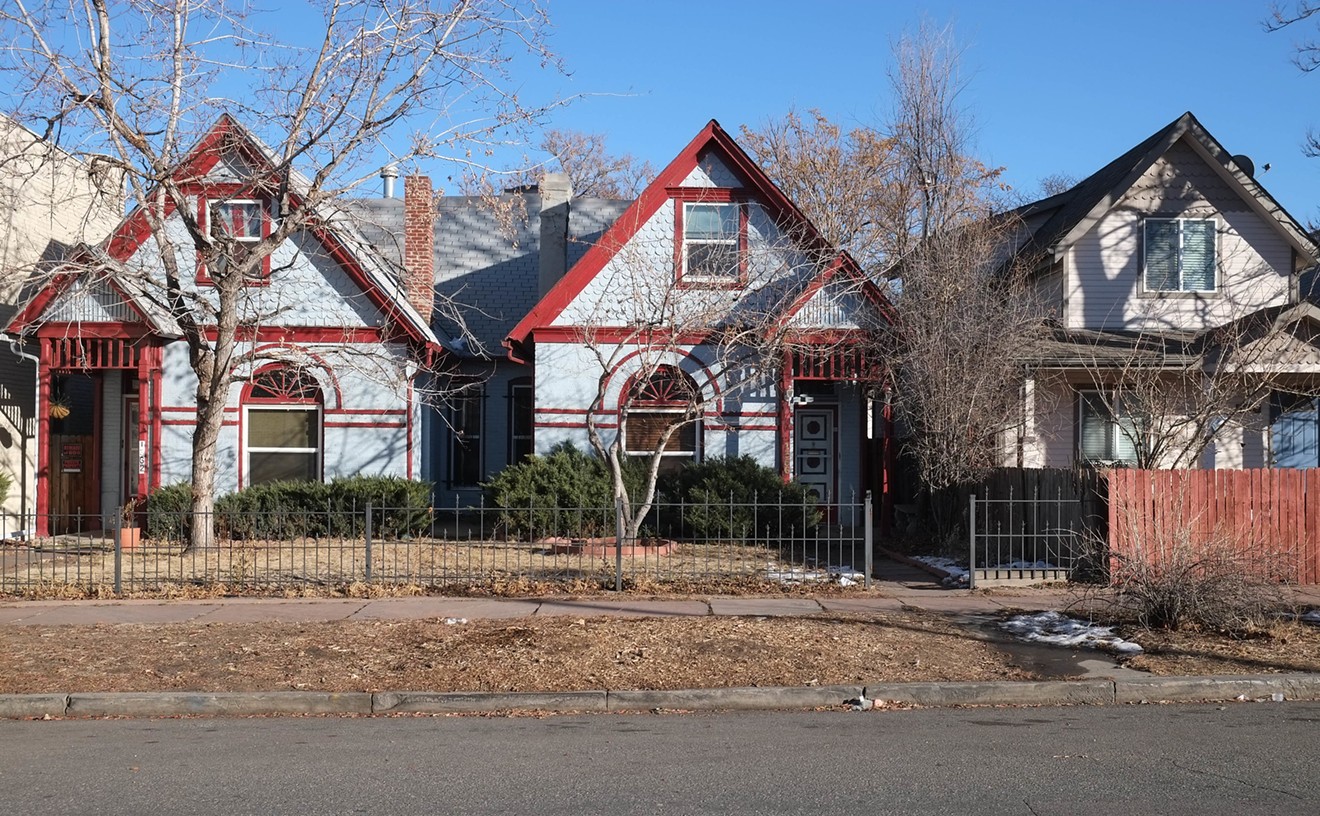Room Service is a new series that takes a look at apartment complexes and other housing options. Our last installment was on X Denver; keep reading for our latest:
What: Accessory Dwelling Units supported by the City of Denver and Denver Housing Authority.
Where: West Denver, in the Athmar Park, Barnum, Barnum West, La Alma Lincoln Park, Sun Valley, Valverde, Villa Park, West Colfax and Westwood neighborhoods.
Cost: Studios as low as $213,000 and full units — up to three bedrooms — that can cost $322,000 at most.
Management: West Denver Renaissance Collaborative (WDRC), which is located within the DHA Planning & Data department.
The buildings: The West Denver Single Family+ ADU Pilot Program is an effort started by the WDRC in 2019 to encourage people in the area to build ADUs on their lots.
“The pilot program focuses on equitable access to development in historically low and moderate-income neighborhoods experiencing involuntary displacement fueled by investor speculation, new public infrastructure investments, and rising housing costs,” a 2022 report says about the program’s progress. “The program is helping longtime residents invest in their properties, build intergenerational wealth, and create economic flexibility.”
The WDSF+ ADU pilot lets people who have lived in west Denver for at least two years choose among seven models for their ADUs — designed by Habitat for Humanity and the American Institute of Architects — ranging from an above-garage, one-bedroom apartment that no one has used to a three-bedroom unit with over 800 square feet.
Habitat for Humanity is the contractor for all the ADUs built through the program. Along with a guaranteed contractor, applicants receive help with technical details, such as permitting and referrals for funding.
“All ADU pilot program participants are eligible for a forgivable subsidy of $30,000 from the City,” the 2022 report explains.
Participants meet with housing counselors certified by the U.S. Department of Housing and Urban Development to review financial readiness and prep for financing. “Including housing counseling early in the ADU development process ensures homeowners understand the financial impacts and costs before they ever talk to a lender or put money towards developing the ADU,” the report says.
The WDSF+ ADU pilot is open to households of all income levels, but those who make 81 percent or more of Denver’s Area Median Income must agree that they will rent it to someone who earns 80 percent or less of Denver’s AMI for the first 25 years of the structure’s existence.
“The program deed restriction specifies the ADU must be used for residential occupancy and that any ADU monthly rent cannot exceed 80 percent of Denver’s AMI maximum rent,” the report adds. “In addition, short-term rental of the ADU is not allowed during the 25-year term.”
The WDRC worked with the DHA to offer a second-position construction mortgage through a line of credit from the Colorado Housing and Finance Authority. That new mortgage made ADU construction more accessible to pilot participants because typically, ADUs would have to be financed through a home-equity loan or temporary financing option that would require re-qualification for a permanent loan after construction ended, leading to uncertainty for homeowners.
“In 2019, while WDRC was developing the ADU pilot program, FirstBank authorized a total of $3 million in loan financing for a custom portfolio ADU-financing mortgage that allows homeowners to refinance their primary mortgage and pull home equity into an ADU construction escrow,” says the report from last year.
In 2021 — the first year ADUs were built through the pilot — all homeowners selected FirstBank for their loans, per the report. The program wound up saving people an average of $50,000 to $75,000 compared to market-rate ADU construction.
The range of costs is broad, with the lowest cost for a studio starting at $213,000; small one- and two-bedroom units costing $243,000 to $290,000; and large two- and three-bedroom units totaling between $270,000 and $322,000.
The inside scoop: Yoseph Assefa, who lives in the Barnum neighborhood, has the largest ADU built through the program so far at 864 square feet. He welcomed people to his home for an open house on September 22.
“I was always kind of looking for something like this when I bought the house and I learned that the lot used to have two units,” he says, explaining how it was a duplex originally. When one side burned down, the property was transformed into a single-family lot — creating more room.
Assefa wanted to use the extra space to build equity for his family. He looked into building an ADU independently, and when he heard about the WDSF+ ADU pilot at a neighborhood meeting, he applied instantly; he imagines he was one of the first applicants ever. Thanks to delays from the COVID-19 pandemic, it took until this year for construction to finally be completed. But Assefa says he is thrilled with the experience.
The large number of organizations involved meant he always had someone to help with questions or snags that he would have encountered on his own — without the program.
“It's been a great process,” he says. “We're super excited.”
At the September 22 open house, project partners shared testimonials from others who have used the program. Some built ADUs so their children could stay in the community where they grew up as adults, when they would otherwise be priced out. Others built smaller ADUs so their parents would have a place to live as they grow older.
Assefa and his family plan to rent the three-bedroom unit out for now, but they envision a future where it's used as a place for their parents to retire. Assefa’s parents live in Fort Collins, and his wife’s parents live near Grand Junction, so it will be useful for them to have a place where they can have them closer as time goes on. “It's just so nice to have the option of having family stay here,” Assefa says. “We have my wife's nephew that's going to go to school at Metro State next year, so it's just a bunch of different options.”
All the units are built to high energy-efficiency standards, they're solar-ready and are designed with adaptability standards to be inclusive for people as they age or those with disabilities. “That means that with a few small modifications, people can make an economical transition to fully accessible housing,” says Dani Slabaugh, who was sharing information about the adaptable design at the open house. “I would say probably at least one of every five folks that applies is thinking about aging, or thinking about helping older adults.”
Check out the WDRC web page to learn more about the program.
Have a suggestion for Room Service? Send information to [email protected].
[
{
"name": "Air - MediumRectangle - Inline Content - Mobile Display Size",
"component": "12017618",
"insertPoint": "2",
"requiredCountToDisplay": "2",
"watchElement": ".fdn-content-body",
"astAdList": [
{
"adType": "rectangle",
"displayTargets": "mobile"
}
]
},{
"name": "Editor Picks",
"component": "17242653",
"insertPoint": "4",
"requiredCountToDisplay": "1",
"watchElement": ".fdn-content-body",
"astAdList": [
{
"adType": "rectangle",
"displayTargets": "desktop|tablet"
},{
"adType": "rectangle",
"displayTargets": "desktop|tablet|mobile"
}
]
},{
"name": "Inline Links",
"component": "18838239",
"insertPoint": "8th",
"startingPoint": 8,
"requiredCountToDisplay": "7",
"maxInsertions": 25
},{
"name": "Air - MediumRectangle - Combo - Inline Content",
"component": "17261320",
"insertPoint": "8th",
"startingPoint": 8,
"requiredCountToDisplay": "7",
"maxInsertions": 25,
"watchElement": ".fdn-content-body",
"astAdList": [
{
"adType": "rectangle",
"displayTargets": "desktop|tablet"
},{
"adType": "rectangle",
"displayTargets": "desktop|tablet|mobile"
}
]
},{
"name": "Inline Links",
"component": "18838239",
"insertPoint": "8th",
"startingPoint": 12,
"requiredCountToDisplay": "11",
"maxInsertions": 25
},{
"name": "Air - Leaderboard Tower - Combo - Inline Content",
"component": "17261321",
"insertPoint": "8th",
"startingPoint": 12,
"requiredCountToDisplay": "11",
"maxInsertions": 25,
"watchElement": ".fdn-content-body",
"astAdList": [
{
"adType": "leaderboardInlineContent",
"displayTargets": "desktop|tablet"
},{
"adType": "tower",
"displayTargets": "mobile"
}
]
}
]

